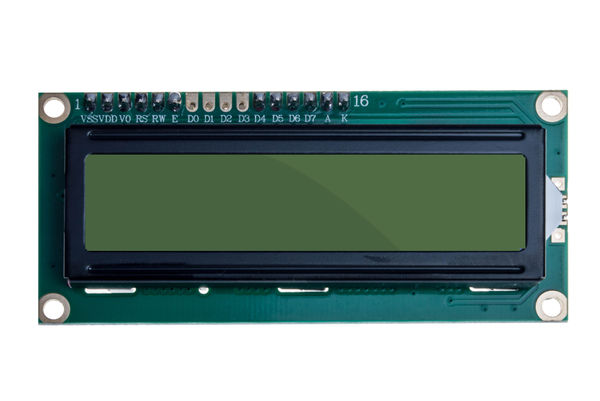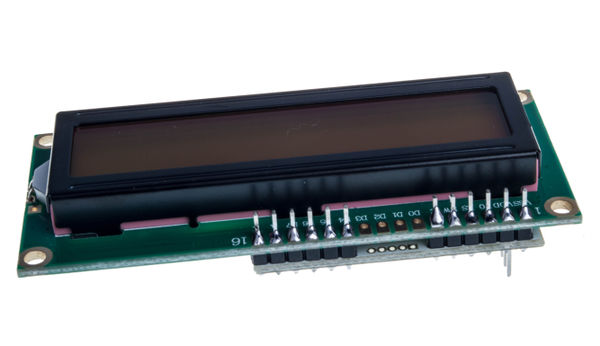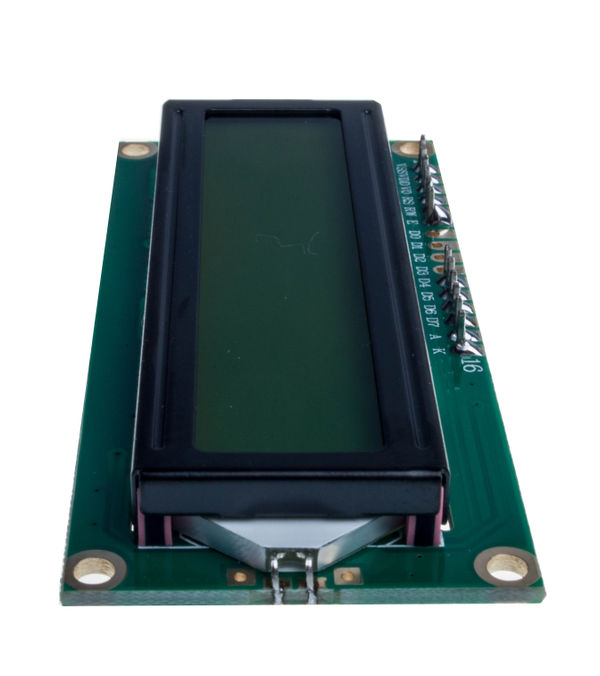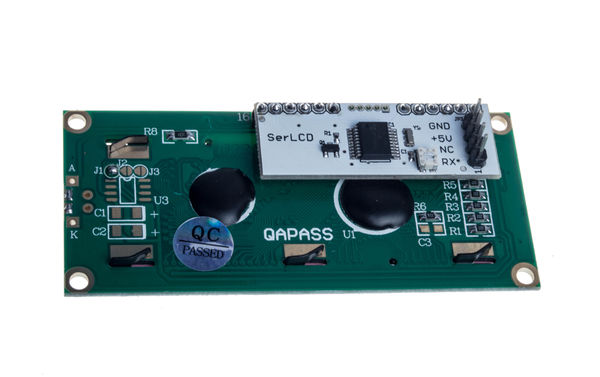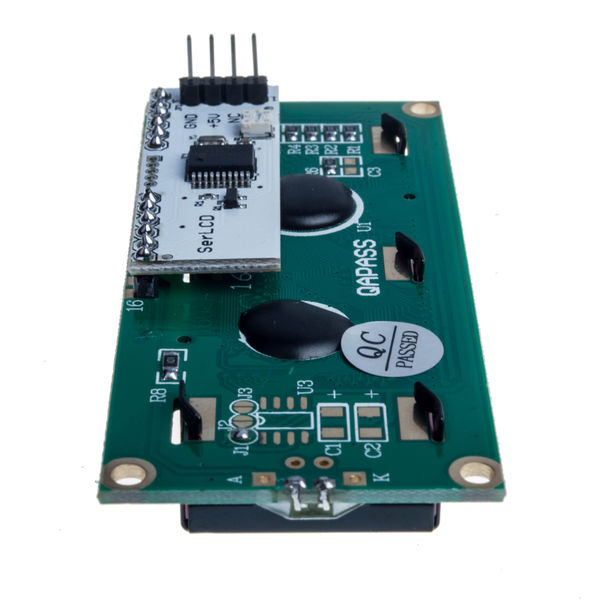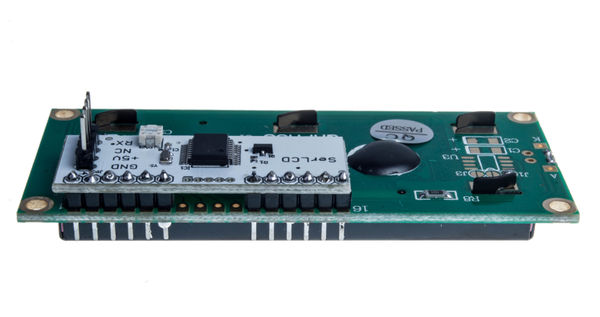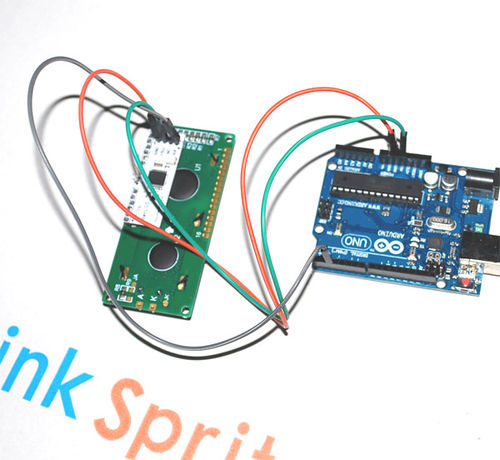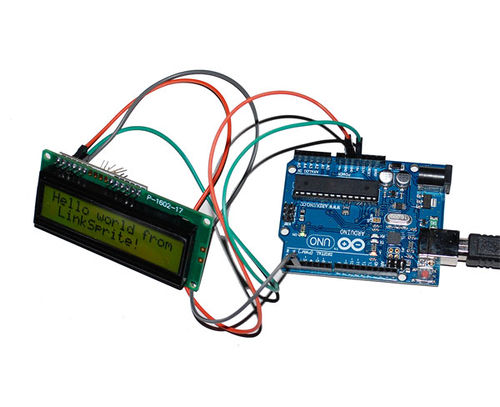Difference between revisions of "Serial UART 16x2 LCD"
Katherine.d (talk | contribs) (→Resources) |
(→Introduction) |
||
| (6 intermediate revisions by 3 users not shown) | |||
| Line 8: | Line 8: | ||
Serial 16x2 LCD has the ability to dim the backlight to conserve power if needed. There is also a potentiometer on the backpack to adjust the contrast. | Serial 16x2 LCD has the ability to dim the backlight to conserve power if needed. There is also a potentiometer on the backpack to adjust the contrast. | ||
| − | [[File: | + | [[File:1114 LCD.jpg|600px]] |
| + | |||
| + | [[File:1114 LCD-9.jpg|600px]] | ||
| + | |||
| + | [[File:1114 LCD-10.jpg|600px]] | ||
| + | |||
| + | [[File:1114 LCD-12.jpg|600px]] | ||
| + | |||
| + | [[File:1114 LCD-15.jpg|600px]] | ||
| + | |||
| + | [[File:1114 LCD-16.jpg|600px]] | ||
== Features == | == Features == | ||
| Line 50: | Line 60: | ||
|- | |- | ||
! scope="row" | Voltage | ! scope="row" | Voltage | ||
| − | | align="center" | 3 | + | | align="center" | 4.3 |
| − | | align="center" | | + | | align="center" | 4.6 |
| − | | align="center" | 5. | + | | align="center" | 5.0 |
| align="center" | V | | align="center" | V | ||
|- | |- | ||
! scope="row" | Current | ! scope="row" | Current | ||
| − | | align="center" | | + | | align="center" | 53 |
| − | | align="center" | | + | | align="center" | 84 |
| − | | align="center" | | + | | align="center" | 128 |
| align="center" | mA | | align="center" | mA | ||
| − | |||
| − | |||
| − | |||
| − | |||
| − | |||
| − | |||
|- | |- | ||
! scope="row" | Dimension | ! scope="row" | Dimension | ||
| − | | align="center" colspan="3" | | + | | align="center" colspan="3" | 80.0×36.0×22.7 |
| align="center" | mm | | align="center" | mm | ||
| − | |||
| − | |||
| − | |||
| − | |||
|- | |- | ||
! scope="row" | Net Weight | ! scope="row" | Net Weight | ||
| − | | align="center" colspan="3" | | + | | align="center" colspan="3" | 39 |
| align="center" | g | | align="center" | g | ||
|} | |} | ||
| − | |||
== Pin definition and Rating == | == Pin definition and Rating == | ||
| Line 181: | Line 180: | ||
*[https://s3.amazonaws.com/linksprite/components_breakout/SerLCD/HD44780.pdf HD44780 Datasheet] | *[https://s3.amazonaws.com/linksprite/components_breakout/SerLCD/HD44780.pdf HD44780 Datasheet] | ||
*[https://s3.amazonaws.com/linksprite/components_breakout/SerLCD/SerLCD_user_guide.pdf SerLCD User Guide] | *[https://s3.amazonaws.com/linksprite/components_breakout/SerLCD/SerLCD_user_guide.pdf SerLCD User Guide] | ||
| + | *[http://learn.linksprite.com/arduino/shields/how-to-flash-serial-basic-16x2-character-lcd-black-on-green-5v-uart/ How to flash PIC16F88] | ||
== How to buy == | == How to buy == | ||
Latest revision as of 01:50, 18 November 2016
Contents
Introduction
The serial UART 16x2 LCD allows you to control a parallel based LCD over a single-wire serial interface. The serial LCD takes care of all the HD44780 commands allowing seamless integration with any micro that can communicate over a wide range of TTL serial baud rates. The
Communication with Serial 16x2 LCD requires 5V TTL serial at a default baud rate of 9600bps (8-N-1). You can adjust the baud to any standard rate between 2400 and 38400bps. The power, ground and RX pins are all broken out to a 4-pin 2.54mm pitch header.
Serial 16x2 LCD has the ability to dim the backlight to conserve power if needed. There is also a potentiometer on the backpack to adjust the contrast.
Features
- Embedded PIC 16F88 utilizes onboard UART for greater communication accuracy
- Baud rates of 9600
- Greater processing speed at 10MHz
- Incoming buffer stores up to 80 characters
- Backlight transistor can handle up to 1A
- Pulse width modulation of backlight allows direct control of backlight brightness and current consumption
- All surface mount design allows a backpack that is half the size of the original
- Faster boot-up time
- Boot-up display can be turned on/off via firmware
Application Ideas
Cautions
Schematic
Specification
| Item | Min | Typical | Max | Unit |
|---|---|---|---|---|
| Voltage | 4.3 | 4.6 | 5.0 | V |
| Current | 53 | 84 | 128 | mA |
| Dimension | 80.0×36.0×22.7 | mm | ||
| Net Weight | 39 | g | ||
Pin definition and Rating
Mechanic Dimensions
Usage
Hardware Installation
- Connect the 5V of Serial LCD to 5V on Arduino.
- Connect GND of Serial LCD to GND of Arduino.
- Connect RX of Serial LCD to digital 3 of Arduino.
Programming
The following is the sample code assuming that the RX of serial LCD is connected to digital 2 of Arduino. The following code has been tested on Arduino IDE 1.0.1.
<syntaxhighlight lang="c">
- include <SoftwareSerial.h>
- define txPin 2
SoftwareSerial LCD = SoftwareSerial(0, txPin); // since the LCD does not send data back to the Arduino, we should only define the txPin const int LCDdelay=10; // conservative, 2 actually works
// wbp: goto with row & column void lcdPosition(int row, int col) {
LCD.write(0xFE); //command flag LCD.write((col + row*64 + 128)); //position delay(LCDdelay);
} void clearLCD(){
LCD.write(0xFE); //command flag LCD.write(0x01); //clear command. delay(LCDdelay);
} void backlightOn() { //turns on the backlight
LCD.write(0x7C); //command flag for backlight stuff LCD.write(157); //light level. delay(LCDdelay);
} void backlightOff(){ //turns off the backlight
LCD.write(0x7C); //command flag for backlight stuff LCD.write(128); //light level for off. delay(LCDdelay);
} void serCommand(){ //a general function to call the command flag for issuing all other commands
LCD.write(0xFE);
}
void setup() {
pinMode(txPin, OUTPUT);
LCD.begin(9600);
backlightOn() ;
clearLCD();
lcdPosition(0,0);
LCD.print("Hello world from LinkSprite!");
}
void loop() { }
</syntaxhighlight>
FAQ
Please list your question here:
Support
If you have questions or other better design ideas, you can go to our forum to discuss or creat a ticket for your issue at linksprite support.
Resources
How to buy
See Also
Other related products and resources.
Licensing
This documentation is licensed under the Creative Commons Attribution-ShareAlike License 3.0 Source code and libraries are licensed under GPL/LGPL, see source code files for details.
